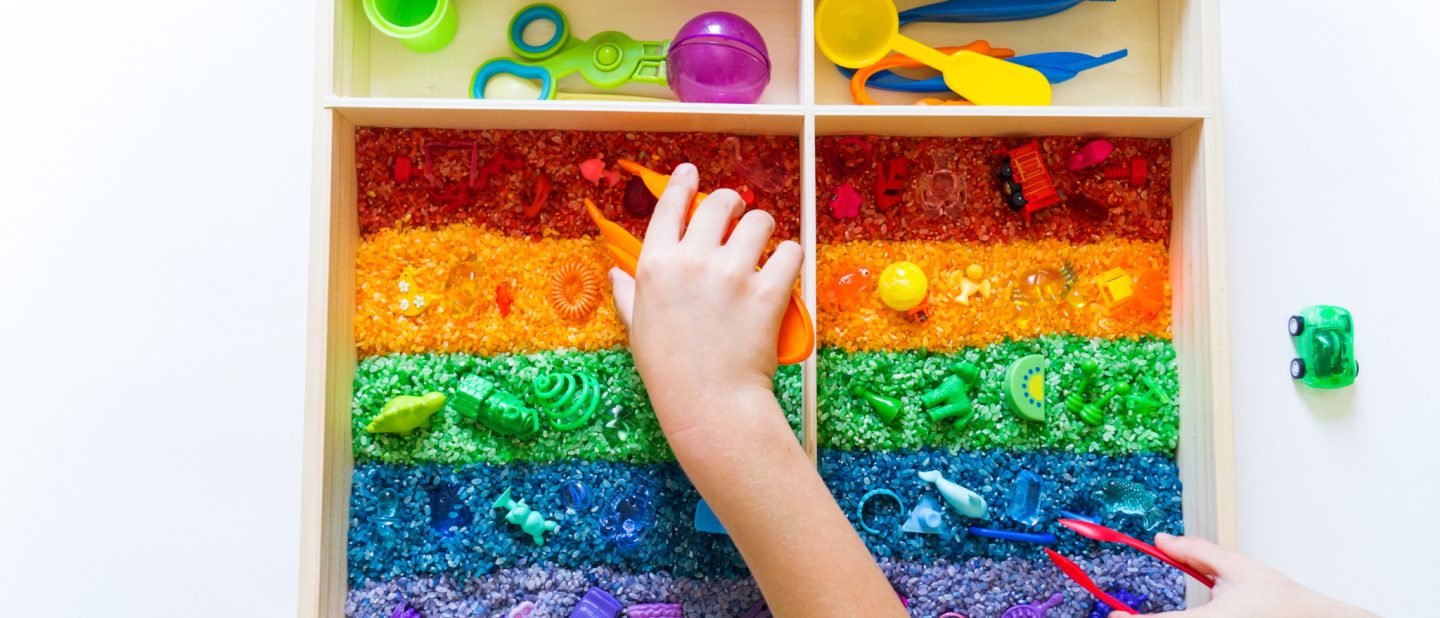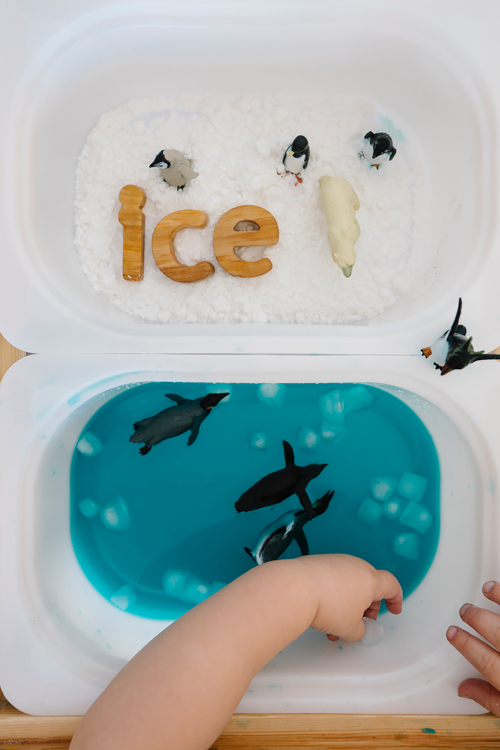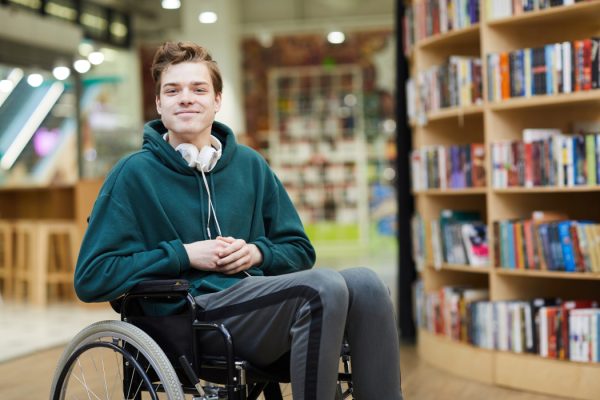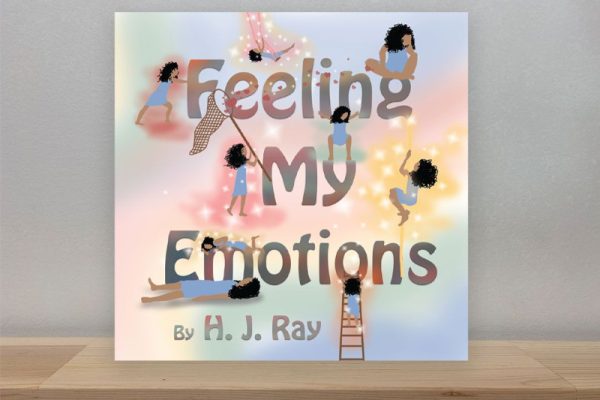
The superpower of sensory bins
Sensory bins are a wonderful development tool for our kids. A container or box limited only by your imagination (and perhaps what’s in your cupboards!), they may be a bit messy at but by engaging all the senses – touch, sight, sound, and even smell – they provide an awesome avenue for exploration and growth.
The materials inside the bin can vary greatly depending on the intended sensory exploration. For example, a sensory bin might be filled with items like sand, rice, water beads, dried beans, or even natural elements like leaves and flowers. Children can manipulate and explore these materials, stimulating their senses and promoting cognitive, motor, and social skills development.
Read on for some of the benefits of a sensory bin session, followed by some fabulous Winter-themed bin ideas:
Motor skills development
When children engage with sensory materials like pouring, scooping, or manipulating small objects they practice and refine their fine motor skills such as hand-eye coordination, dexterity, and finger strength. Including different implements such as spoons and tweezers or tongs will provide opportunities for different types of fine motor workouts.
Time at a sensory station also provides a full body work out giving children the chance to use larger muscle groups in their arms, legs and core – crossing the mid-line, balancing, practicing spatial awareness and overall body control.
Sensory integration
Sensory integration refers to the brain’s ability to interpret and respond to sensory information effectively. Sensory bins provide a controlled environment where children can explore different textures, shapes, and sounds at their own pace. This exposure helps develop their sensory processing skills, enabling them to better navigate and respond to sensory stimuli in their daily lives.
Emotional regulation
Sensory bins provide a calming and therapeutic outlet for emotional expression. The repetitive, rhythmic movements involved in sensory play help reduce anxiety, increase focus, and promote relaxation. Engaging in sensory bin activities can serve as a self-regulation tool, allowing children to regain control over their emotions and find comfort in a safe and predictable environment.
Language development
Sensory bins also support language development in children. As your child engages with various materials, verbally label everything and describe what they see, feel, and hear. You can help your child expand their vocabulary, learn new words, and develop communication skills by describing textures, colours, shapes, and making connections between their sensory experiences and language. Kids can also sort objects in the bins based on different traits like colour or size, which helps with language and thinking skills. Playing language games and rhymes, like “I Spy,” is fun and helps with phonological awareness.
The tactile, visual, and auditory stimuli in sensory play can help children with speech challenges focus on alternative modes of expression, such as gestures, facial expressions, or even using the materials themselves to communicate. The engaging nature of sensory bins can also reduce anxiety and provide a comfortable environment for speech and language practice.
Life-skills
Sensory play offers a wealth of opportunities for children to develop essential life skills and engage in imaginative pretend play. Here are some specific examples and expanded benefits:
Practical Life Skills: Sensory bins provide a safe and controlled environment for children to practice practical life skills. Pouring and scooping materials like liquid or grains using cups, spoons, or tongs helps develop hand-eye coordination, fine motor skills, and concentration. These skills directly transfer to tasks like pouring drinks or transferring ingredients in real-life scenarios.
Problem-Solving and Creativity: Pretend play within sensory bins encourages children to work through real-world scenarios and solve problems. Whether they are building structures with blocks, creating stories with figurines, or finding hidden objects, they engage in critical thinking, imaginative problem-solving, and creativity. This fosters their ability to think outside the box and develop innovative approaches to challenges.
Social Interaction and Communication: Pretend play in sensory bins provides opportunities for social interaction and communication. Children can collaborate, negotiate roles, and engage in cooperative play with peers or family members. This promotes social skills, empathy, and effective communication as they express their ideas, negotiate, and share their experiences within the pretend play scenarios.
Self-control & boundaries
Remember that mess that we mentioned earlier?
Setting clear rules and boundaries during sensory bin playtime is crucial for teaching children self-control, fostering their ability to follow guidelines, and instilling respect for limits. By establishing and reinforcing these rules effectively, parents can create a safe and structured environment for sensory exploration. Here are some tips to help:
Communicate Expectations: Clearly communicate the rules before starting sensory play. Use age-appropriate language and explain the reasons behind the rules. For example, explain that keeping objects inside the bin prevents accidents or that not putting items in their mouth ensures safety.
Consistency is Key: Be consistent in enforcing the rules. Children thrive in predictable environments, so consistently reinforcing the established boundaries will help them understand the importance of following guidelines.
Positive Reinforcement: Recognise and praise your child’s efforts in following the rules. Use positive reinforcement techniques such as verbal encouragement, high fives, or small rewards to motivate and reinforce their self-control and rule-following behaviour.
Modelling Behaviour: Lead by example. Show your child how to handle the sensory materials appropriately, follow the rules, and respect the boundaries.
Incorporating seasonal themes into sensory play adds an extra layer of excitement and engagement for children. As the seasons change, so do the sights, sounds, and textures that surround us. So, if you’re ready to set aside your dislike of mess (get a wipe clean floor mat ready, you’ll thank us later!) here are a few winter-themed sensory bin ideas you can try with your kids right now:
Arctic Adventure


Fill a bin with blue-tinted water beads or cotton balls to create an icy landscape. Add plastic Arctic animals, faux ice cubes, and small containers for scooping and pouring. This sensory bin offers opportunities for imaginative play, vocabulary development, and sensory exploration of cold and wet textures.
Snowy Sensations
Use a large plastic container as the base and fill it with artificial snow or white rice. Add different sized snowflake cut-outs, jingle bells, and scoops. Encourage children to build snow castles, make patterns in the snow, or find hidden objects. This sensory bin stimulates tactile exploration, creativity, and fine motor skills.
Winter Wonderland
Create a winter wonderland by combining blue and silver glitter with shaving cream or kinetic sand. Add small winter-themed figurines, pine cones, and plastic trees. Children can mould the sensory materials into snowballs or make footprints in the “snow.” This sensory bin encourages sensory processing, imaginative play, and social interactions.
Winter Forest
Fill a bin with pinecones, small branches, and dried leaves. Add animal figures like deer, squirrels, and owls. Enhance the sensory experience by placing a few drops of evergreen-scented oil on pinecones or incorporating scented pinecones into the mix.
Hot Cocoa Delight


Fill a bin with brown kinetic sand or cocoa powder and chocolate and add marshmallows, spoons, and cups. Children can pretend to make hot chocolate, scoop and pour the sand, and create various shapes. This sensory bin provides a warm and comforting experience, allowing children to engage in pretend play, fine motor practice, and social interaction. Keep an eye on things going into curious mouths with this one!
Don’t forget the scent!
Smell is a sensory superstar that adds an extra layer of magic to sensory bins. By incorporating different scents into the sensory bin materials, you can create a multi-sensory experience that engages the olfactory senses and enhances the overall sensory adventure. Consider adding a few drops of essential oils with winter scents like peppermint, cinnamon, or pine to the sensory materials. As children explore the winter-themed sensory bins, they’ll be greeted with delightful aromas that transport them to a winter wonderland.
Sensory bins offer a multitude of benefits for children with disabilities – they’re not just fun and games—they’re powerful tools for growth and learning. So, let’s bundle up, dive into the sensory fun, and watch our little superheroes shine!






